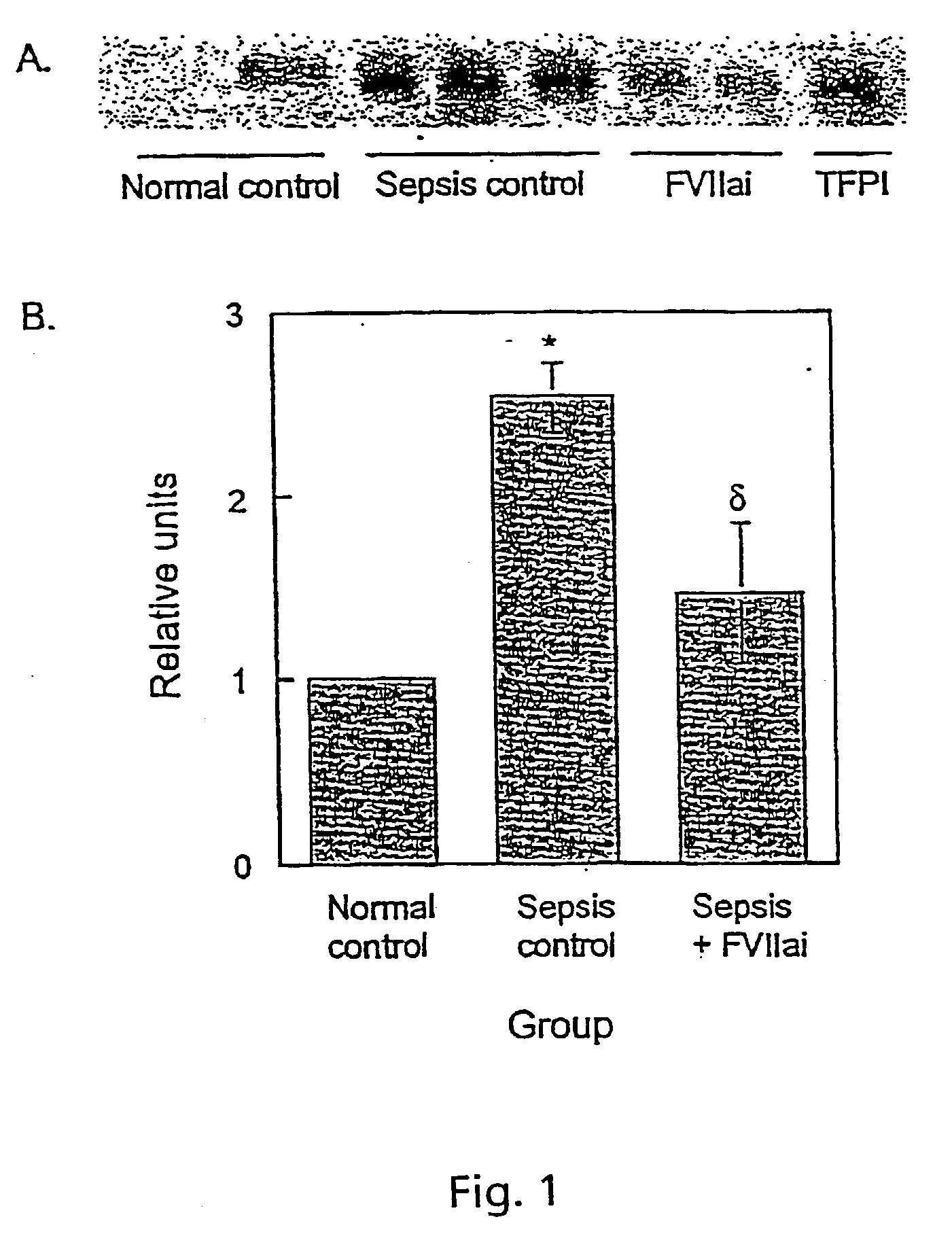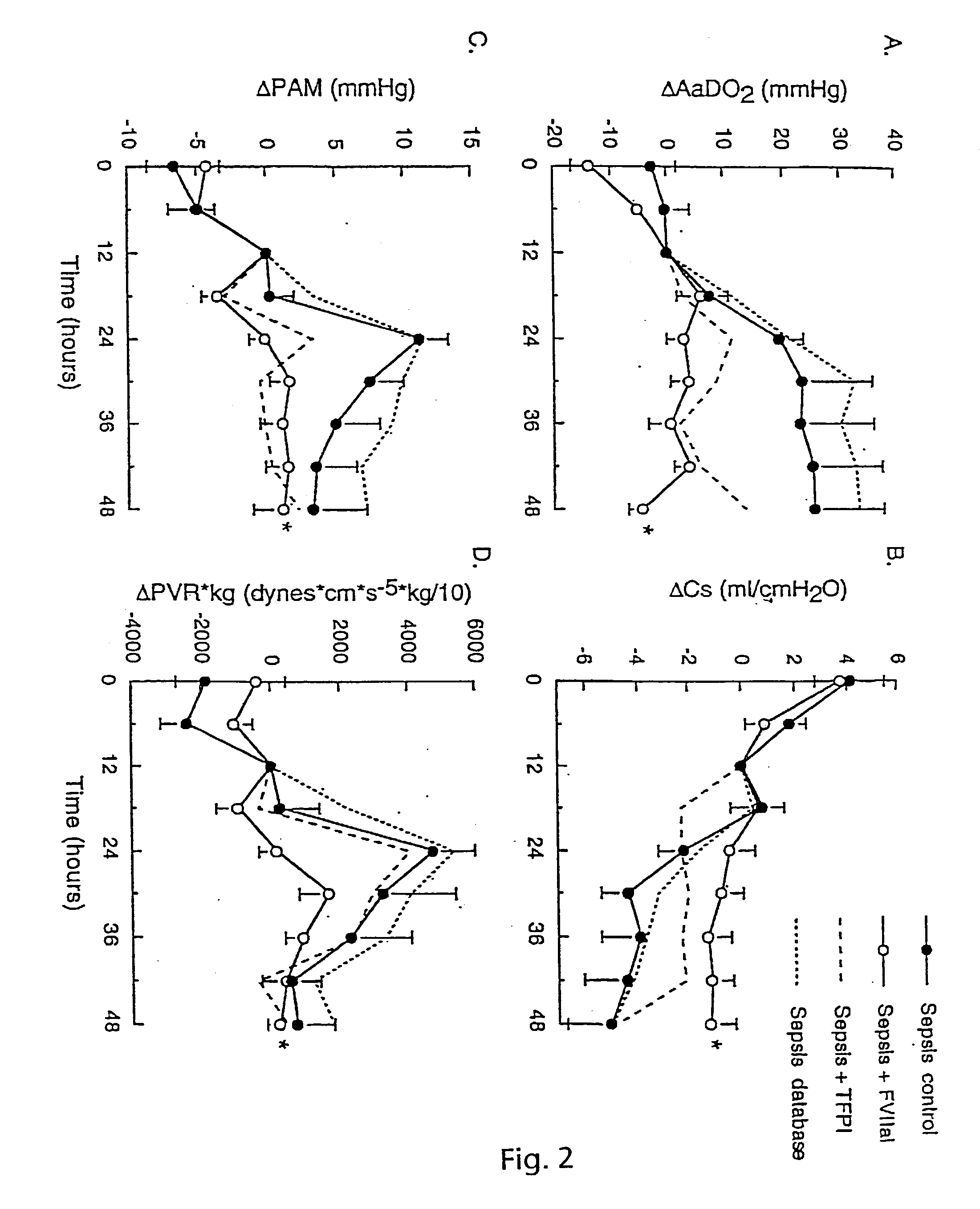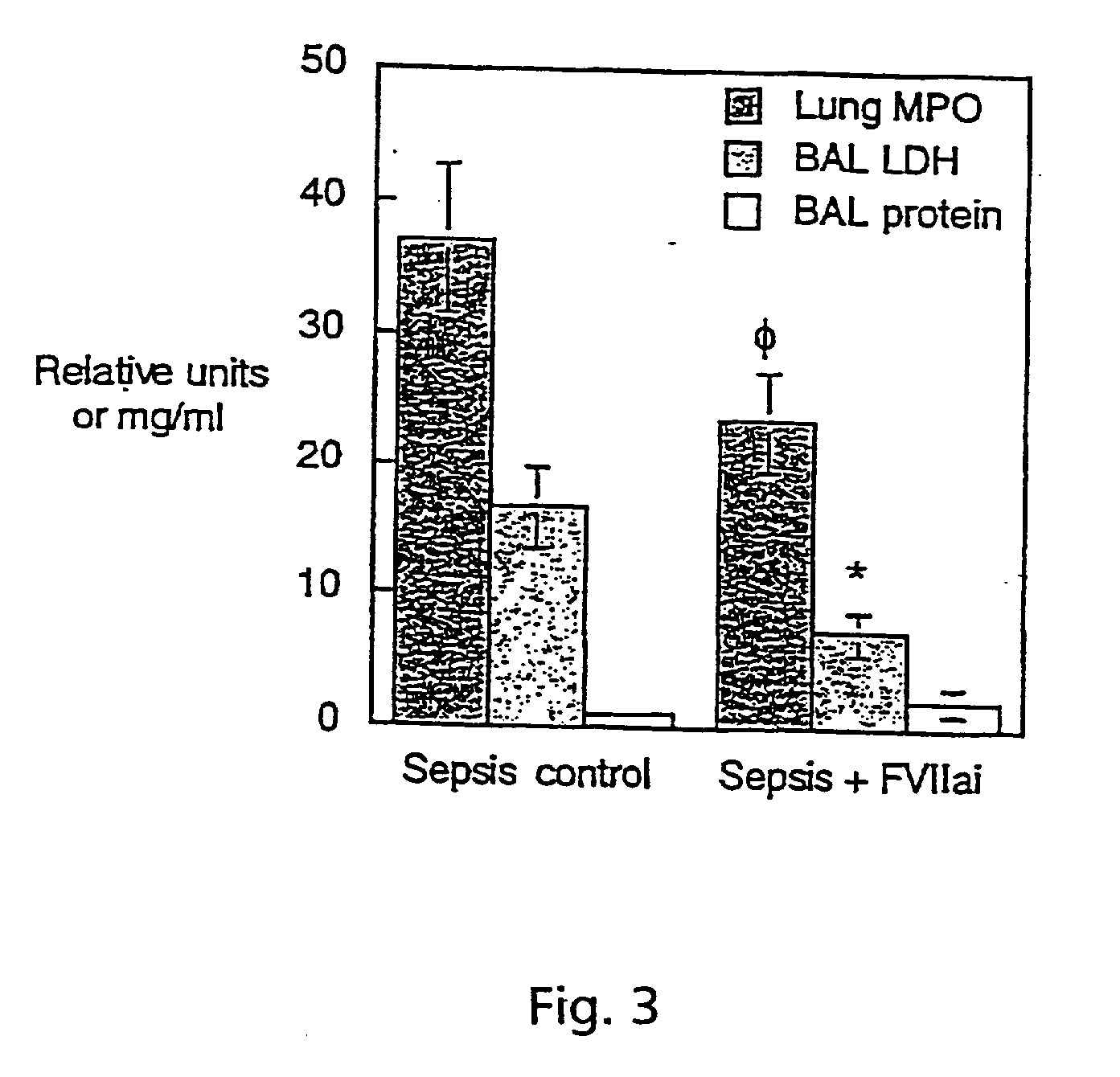Modified FVII in treatment of ARDS
a technology of ards and fvii, applied in the direction of peptide/protein ingredients, extracellular fluid disorder, peptide sources, etc., can solve the problems of lung oedema, lung damage and/or failure, etc., and achieve the effect of a greater positive impact on pulmonary and renal injury
- Summary
- Abstract
- Description
- Claims
- Application Information
AI Technical Summary
Benefits of technology
Problems solved by technology
Method used
Image
Examples
example 1
[0104] Biological Activity of FVII
[0105] The activity of factor VIIa or factor VIIa variants may be measured using a physiological substrate such as factor X, suitably at a concentration of 100-1000 nM, where the factor Xa generated is measured after the addition of a suitable chromogenic substrate (eg. S-2765). In addition, the activity assay may be run at physiological temperature.
[0106] "In Vitro Proteolysis Assay"
[0107] Native (wild-type) Factor VIIa and Factor VIIa variant (both hereafter referred to as "Factor VIIa") are assayed in parallel to directly compare their specific activities. The assay is carried out in a microtiter plate (MaxiSorp, Nunc, Denmark). Factor VIIa (10 nM) and Factor X (0.8 microM) in 100 microL 50 mM Hepes, pH 7.4, containing 0.1 M NaCl, 5 mM CaCl2 and 1 mg / ml bovine serum albumin, are incubated for 15 min. Factor X cleavage is then stopped by the addition of 50 microL 50 mM Hepes, pH 7.4, containing 0.1 M NaCl, 20 mM EDTA and 1 mg / ml bovine serum album...
example 2
[0109] Blockade of Extrinsic Coagulation Decreases Lung Injury in Baboons with Established Gram-Negative Sepsis
[0110] It has been demonstrated that blockade of initiation of coagulation with active site-inactivated VIIa (ASIS) at the time of live bacteria infusion attenuated sepsis-associated acute lung injury (ALI) and renal failure in baboons. We have shown that established E. coli sepsis also respond to treatment with ASIS with decreased ALI and renal failure.
[0111] Adult male baboons received an infusion of 1.times.10.sup.9 / kg heat-killed E. coli 12 hours prior to intravenous live E. coli 1.times.10.sup.10 / kg. Animals were mechanically ventilated for 48 hours and supported with fluids to maintain a PCWP (pulmonary capillary wedge pressure) of 8-12 mmHg. Six animals were treated one hour after live bacterial infusion with ASIS (1 mg / kg iv followed by 50 .mu.g / kg / hr). Six animals served as sepsis controls. Values shown as mean.+-.SE.
[0112] ASIS prevented plasma fibrinogen depletio...
example 3
[0114] Tissue Factor Blockade in Experimental Acute Lung Injury
[0115] We studied blockade of TF-initiated coagulation in baboons with ALI from E.coli sepsis. Active site inactivated FVII (ASIS) blocked extrinsic coagulation and decreased systemic cytokine responses, including interleukin (IL)-6, IL-8 and tumour necrosis factor receptor-1. It also attenuated sepsis-related injury in the lung, kidney and other tissues. Measurements of plasma fibrinogen and thrombin-anti-thrombin III (TAT) complexes confirmed a decrease in intravascular activation of coagulation after treatment with ASIS.
[0116] In untreated septic animals, fibrin deposition was prominent in the lung and other tissues in both intra- and extra-vascular compartments. This was decreased but not eliminated in septic animals treated with ASIS, suggesting that protective effects of TF-blockade were not solely due to decreased generation of fibrin. TF blockade with ASIS also decreased inflammatory changes in the lung, includin...
PUM
 Login to View More
Login to View More Abstract
Description
Claims
Application Information
 Login to View More
Login to View More - R&D
- Intellectual Property
- Life Sciences
- Materials
- Tech Scout
- Unparalleled Data Quality
- Higher Quality Content
- 60% Fewer Hallucinations
Browse by: Latest US Patents, China's latest patents, Technical Efficacy Thesaurus, Application Domain, Technology Topic, Popular Technical Reports.
© 2025 PatSnap. All rights reserved.Legal|Privacy policy|Modern Slavery Act Transparency Statement|Sitemap|About US| Contact US: help@patsnap.com



